Author: Sankalp Shangari
Compiled by: Shaw Golden Finance
Summary
As the Digital Asset Treasury (DAT) becomes a financial institution for on-chain 'enthusiasts,' what are these companies turning into?
Not just treasury reserves, but also a programmable capital structure;
Not just balance sheets, but also liquidity engines;
Not just holders of cryptocurrencies, but also builders of a crypto-native financial ecosystem.
The corporate finance departments of the 2020s will no longer resemble traditional CFO offices but will look more like a real-time, blockchain-driven hedge fund equipped with APIs, vaults, and validators.
They will handle cross-border payments with stablecoins. Invest funds into the ecosystems they help govern. Issue tokens, set up special purpose vehicles (SPVs), and conduct macro hedging—all on-chain.
Yesterday's DAT held Bitcoin. Today's DAT runs the flywheel. Tomorrow's DAT will control a programmable capital machine.
They will issue stocks to buy ETH. They will yield farm with nine-figure balance sheets. They will stake governance tokens to shape ecosystems, and they will do so while reporting quarterly to Wall Street. They will blur the lines between treasury, venture capital funds, and protocol operators until all that remains is the self-printing of yield curves.
Welcome to a new era of capital formation birthed by cryptocurrencies, presented in equity form, and managed by spreadsheets and smart contracts.
In this summer of corporate performance, spreadsheets have gathered dust, while balance sheets have undergone digital transformation. Public companies worldwide are abandoning mundane capital plans in favor of bold cryptocurrency gambles, a scene reminiscent of opera.
Forget about the R&D frenzy or flashy product launches. The big event this season isn't new gadgets or services—it's fundraising, pouring proceeds directly into cryptocurrency wallets, and letting the market work its magic. From French chip makers to Texas electric bike startups, the roster of participants is wonderfully diverse. This is your front-row ticket to experience the corporate cryptocurrency frenzy.
Phase one - Accumulation era
"A fallen cowboy once roamed the wilderness of DeFi; now, the suited ones from Wall Street have entered the same realm."
What happened:
Since June, nearly 100 public companies have initiated token purchases, raising over $43 billion, which is double the total amount raised from all IPOs in the U.S. in 2025.
MicroStrategy tops the list with 607,770 Bitcoins (approximately $43 billion) on its books; the Trump media company has invested $2 billion in Bitcoin and its derivatives.
Special Purpose Acquisition Companies (SPACs) have transformed into 'crypto treasuries' (like ReserveOne, Bitcoin Standard), providing retail investors with cutting-edge investment opportunities.
Why it matters:
This is not just fund management; it is performance art interpreted through stock tickers.
What started as marginal experiments (like the 'DeFi summer' of 2021) has now transformed into mainstream finance dressed in tuxedos.
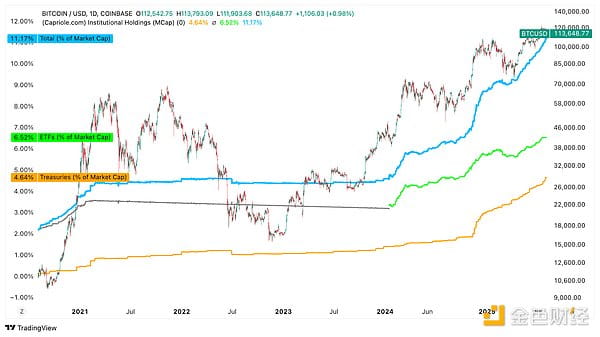
This chart vividly illustrates the institutional transformation occurring in the Bitcoin market, which is the central argument of DAT summer. Currently, over 11.17% of Bitcoin's market capitalization is held by institutions, with exchange-traded funds (ETFs) accounting for 6.52% and corporate treasuries for 4.64%. From the initial phase of sporadic accumulation by a few bold enterprises, this trend has evolved into a fully operational flywheel, especially evident after 2023, as ETF inflows surged and Bitcoin prices rose. This shift reflects the 'activation' of the second phase, where structured funds raised by Wall Street through ETFs and financing are driving the development of liquidity, momentum, and narrative. The significant growth in ETF and corporate treasury holdings is not merely financial activity; it marks the institutionalization of Bitcoin as a balance sheet asset and capital market tool. In short, this chart is the clearest evidence so far: Bitcoin has become a corporate asset class.
Phase two - Harvesting engineering yields from dormant reserves
"Buying Bitcoin is phase one. The real show starts when you make it work." — Steve Kurz, Galaxy Digital
Yield generation strategies:
Staking and DeFi liquidity: Various companies are putting ETH and other tokens into DeFi protocols.
Structured products and options: Capital market professionals are layering options coverage and basis trading on cryptocurrency holdings.
Governance manual: Vote in decentralized autonomous organizations (DAOs) and stake governance tokens to influence protocol roadmaps.
On-chain ecosystem: Build products that integrate corporate fund management into real-world applications.
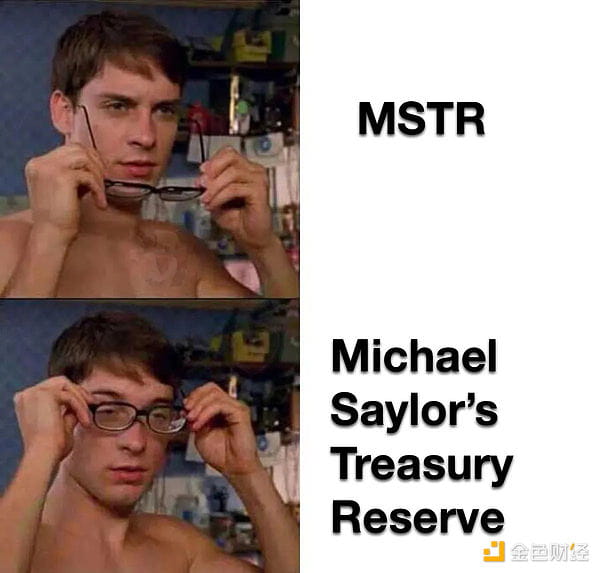
New flywheel:
Public companies buy tokens.
Token prices rise.
Stock prices soar as net asset values increase.
Issue new shares or convertible bonds.
Yields are redistributed into more tokens.
Repeat this process continuously.
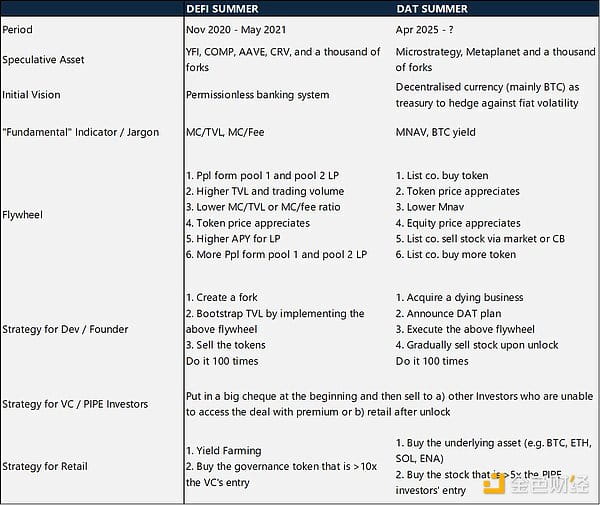
Why it's different:
This is a fusion of traditional capital markets and crypto innovation, fully regulated and highly liquid.
Companies like Galaxy Digital have helped raise $4 billion for cryptocurrency acquisitions, including custody, risk management, and yield infrastructure.
Public companies currently hold nearly 900,000 Bitcoins, a 35% increase in just one quarter.
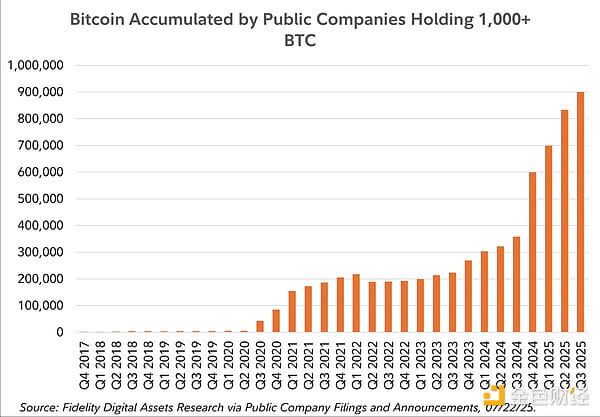
A sense of skepticism, disbelief, and déjà vu
Some of the smartest people in the room are rolling their eyes:
"This is a bubble."
"Ethereum (ETH) has no real demand—why choose SBET?"
"If the flywheel stops turning, these crypto treasury companies are done."
Makes sense. But remember: prices change perceptions, time will prove everything.
The same is true for DeFi tokens, NFTs, and even Bitcoin itself. If irrational exuberance creates real infrastructure, it will not perish—it will continue to evolve.
Phase three - Quality traps and quality rewards
"Not everyone can get the same premium. Act early, don't repeat." — Galaxy Digital
Quality phenomena:
Companies with large crypto reserves trade at an average of 73% higher than their on-chain assets.
But saturation of risk will cut into profits—if you’re the tenth to enter the market, it becomes indifferent.
Regulatory and market changes:
GENIUS & CLARITY Acts: Stimulating competition for stablecoins; influencing Circle's valuation before the second quarter earnings report on August 12.
Ethereum as a corporate strategy: SharpLink Gaming's 360,807 ETH reserves increased by 110% this month, signaling a new on-chain treasury model.
As Circle declines, Galaxy rises
Analysts refer to it as the 'comprehensive provider' for institutions, surpassing single-service firms like FalconX and NYDIG.
The GENIUS Act and CLARITY Act support Galaxy's stablecoin custody, issuance, and AI data center business.
Currently, over two-thirds of Galaxy's value comes from its infrastructure, such as the Helios facility (formerly Argo Blockchain), which currently hosts CoreWeave's AI and high-performance computing business.
DAT meets computation, a vertically integrated architecture.
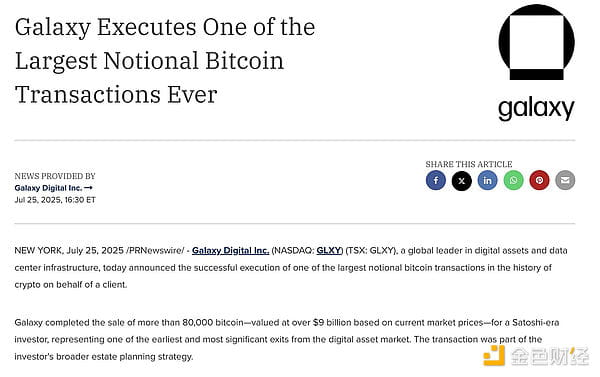
A key driver behind this corporate crypto flywheel is the concept of mNAV, or market net asset value, which measures the real-time value of cryptocurrencies held by companies relative to their stock market capitalization. When a public company accumulates a large amount of crypto assets and the asset prices rise, its mNAV increases significantly. The difference between the actual token value and the stock value becomes a tradable narrative. The market starts to price not only from an operational perspective but also from the potential future appreciation of tokens, often at a premium. This leads to soaring stock valuations, enabling companies to issue more shares or convertible bonds under favorable conditions and then reinvest that capital to buy more cryptocurrencies. This is a self-reinforcing cycle: crypto reserves → higher mNAV → higher stock price → more funds → larger reserves. In this cycle, mNAV is not only a valuation tool but also the fuel driving the next phase of growth.
Survival manual:
Have a strategy: Don't just buy tokens—tailor financial products.
Stay flexible: Adjust incentives as regulations and earnings seasons change.
Build infrastructure: Go beyond hoarding; launch APIs, vaults, and validators.
Is DAT summer or a corporate casino?
What began as a trickle—few adventurous companies dipping their toes into cryptocurrency—has now evolved into a roaring wave filled with various document filings, financial disclosures, and fund flows. Welcome to 'DAT summer,' where public companies are not only hoarding digital gold but also weaponizing it.
Yesterday's DAT held Bitcoin.
Today's DAT operates a self-reinforcing flywheel.
Tomorrow's DAT will be a programmable capital machine: issuing stocks to buy ETH, yield farming with a nine-figure balance sheet, and shaping ecosystems through governance.
We have entered an era where the question is no longer whether companies will hold cryptocurrencies, but how much, which areas they will venture into, and what new tricks they will come up with next. Whether this will evolve into a new financial architecture or just the fanciest corporate roulette game ever remains to be seen. But one thing is certain: the casino doors are open, and the chips are digital.
This is either a new financial architecture built on digital gold or the fanciest corporate roulette in history. Regardless, Wall Street this summer feels less like a strategy meeting and more like a casino filled with laser eyes and 'FOMO' market sentiments.
Welcome to DAT summer, where public companies not only purchase digital assets but also weaponize them.



